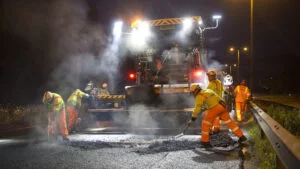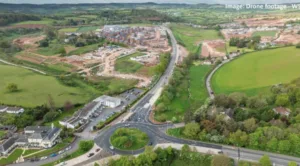By Peter Ramsey and Giles Perkins
Earlier this year, the All-Party Parliamentary Group (APPG) on the Rural Powerhouse released its report responding to the levelling-up agenda, which revealed that the rural economy is 18% less productive than its urban counterparts – a gap which costs the UK economy £43 billion a year.
As decision-makers in national and local government consider how to put ’Levelling Up’ goals into practice, the rural and urban divide cannot be overlooked.
Investment in the green economy may well present the answer to levelling up growth across the UK, by strengthening local energy industries and creating new industrial hubs, while also driving our national net zero target. Yet, for this package to be successful, we must engage with rural communities too, developing solutions relevant to their needs.
From the well-connected greenbelts around our major cities to more remote countryside, coastal, and island communities, there is not a singular type of rural. Across these areas a range of challenges persist but they are not uniformly felt. Key issues include huge wealth variations and complex employment webs which rely on a dispersed network of rural businesses. Lower income residents are being priced out of their local housing markets, and many towns and villages are also seeing a brain drain of younger people, who leave in search of higher education but fail to return due to the lack of employment opportunities. In addition, rural facilities and community spaces (such as village halls and local shops) continue to be lost, reducing services and increasing social isolation.
The social and economic difficulties faced by rural communities are compounded by a range of mobility limitations including diminishing rural public transport networks and limited active travel infrastructure. The lack of transport options subsequently establishes car dependency, which not only leads to greater rural fuel poverty and reinforces social isolation but exacerbates the challenge of tackling the climate crisis in rural areas.
Yet, rural areas provide many opportunities. Not only do they provide open space, food security and natural resources, protect biodiversity and deliver environmental net gain, they are also key to our net zero targets, by generating clean energy and delivering overall climate resilience. Rural communities are also essential to the UK’s drive for placemaking as they keep local traditions and histories alive. Ultimately, our rural areas need the support of improved transport to prosper and continue to reap the benefits that the countryside and coasts provide.
However, continuing to apply traditional thinking to mobility challenges in our rural areas may simply result in the same challenges worsening outcomes for their communities. Instead, we must rethink the future of rural mobility and wider provision of needs to deliver a minimum level of accessibility across our rural areas and meet residents’ needs locally.
To do so, just as urban planners are developing integrated and collaborative infrastructure that creates 15-minute cities – in which daily urban needs are accessible within 15 minute on foot or by bike – WSP has proposed establishing ‘30-minute rural communities’ in a recent whitepaper, enabling clusters of rural communities to work together to provide greater access to their residents’ basic daily needs.
Developing 30-minute rural communities requires a three-pronged approach. First, we must improve the baseline of social and community infrastructure within those clusters of rural communities, to maximise day-to-day opportunities. Second, we must localise social infrastructure through community, public, and third sector partnerships to maximise the potential to capitalise on fixed, moving and human resources. Thirdly, we need to improve physical and digital access, and energy provision, to the next layer of services that are not available within in those community ‘clusters’ by improving connectivity to local market towns and cities.
This should be supported by active travel networks for shorter journeys, where possible, as well as shared and publicly-available transport. Cars and vans will continue to be a key part of rural mobility but increasing sharing and electrification is vital to moving away from car-dependency and resulting carbon emissions.
Just as a myriad of rural communities exist, so too can a variety of unique rural mobility strategies be developed. No one-size-fits-all solution exists and any plan must be specifically designed and delivered. Instead of thinking of rural areas as single, isolated villages or towns, rural mobility can be made easier by envisioning rural areas as adaptable networks of local government, businesses and communities, alongside larger towns and cities that surround and support them. Indeed, delivering these changes through cross-sectoral and cross-boundary partnerships and funding can make delivery of rural transport networks more financially and operationally sustainable.
Ultimately, if they are given the tools, skills and initial funding, many of our rural communities already hold significant capacity to deliver a successful future for themselves. Supporting rural development through improved mobility is ultimately an investment in the growth of the national economy and a vital component of a successful net zero agenda.
Peter Ramsey is Associate Director, Future Mobility at WSP
Giles Perkins is Head of Profession, Future Mobility at WSP and Programme Director for the ADEPT Live Labs


























